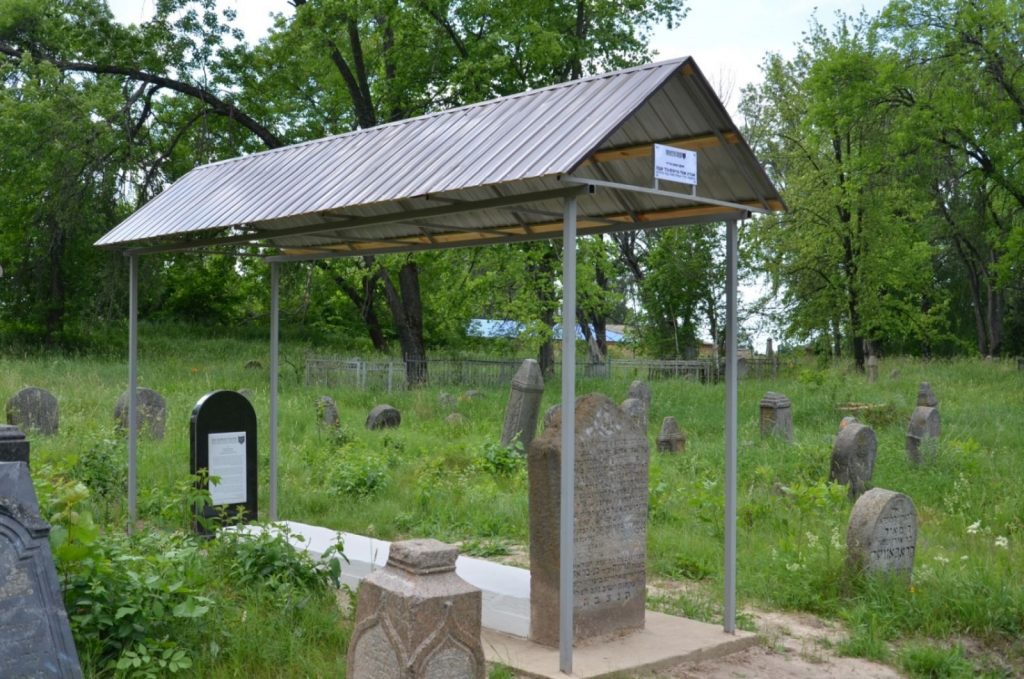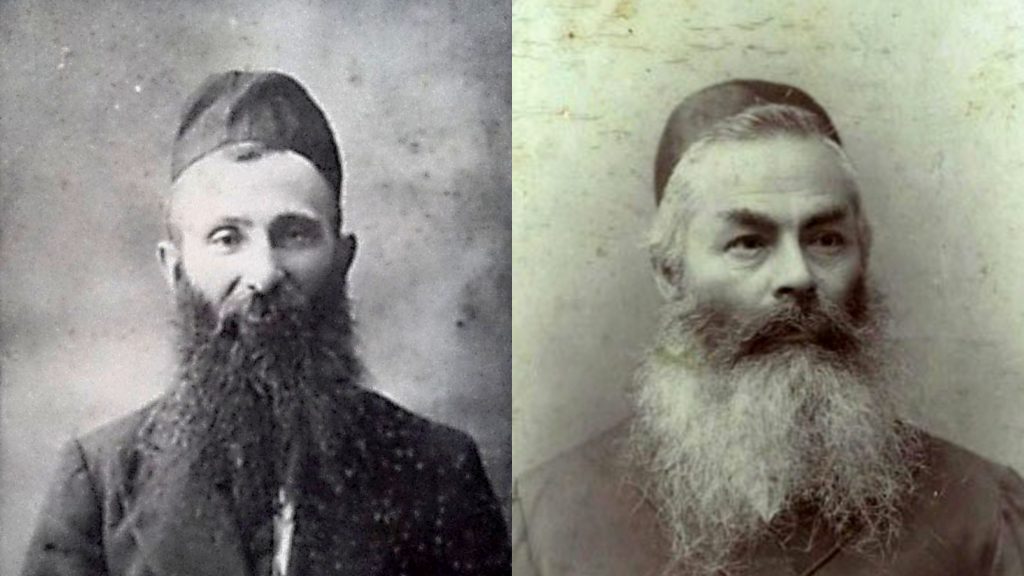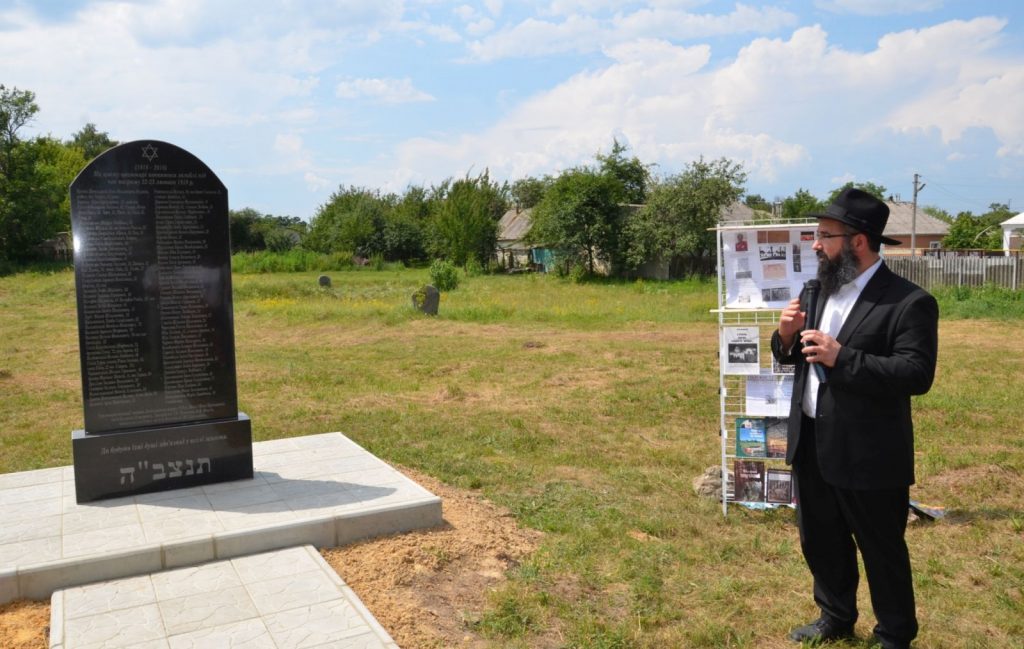Will Hlukhiv become the second Uman?

In the summer of 2020, a monument to the victims of the anti-Jewish pogrom of 1918 was unveiled at the ancient Jewish cemetery in Hlukhiv, on the initiative of the chairman of that city’s Jewish community. “Resting in this cemetery are those who perished during the pogrom of 22–23 February 1918. May their souls be tied into the knot of life,” proclaims the inscription on the monument. For the first time in a hundred years, the Kaddish was recited by a rabbi on this spot.
The Reds occupied Hlukhiv on 19 January 1918, after which power passed from hand to hand several times. Where there is anarchy, there are pogroms, but what happened on 22–23 February of that year surpassed all the challenges that the community had had to face. “Approximately 500 people were killed, mainly the intelligentsia. Amosov, the head of the Zemstvo Council, the Trofymenko landlords, the Bek brothers, and Prince Rumiantsev were shot, as the newspaper Vozrozhdenie (Rebirth) reported on 13 March of that year in an article entitled ‘St. Bartholomew’s Night.’ The Jewish population was mostly affected. Property was robbed, stores were looted. Many homes on the main street were destroyed. The killings were carried out with extraordinary brutality.”
The historian Elye Tsherikover, in his book about Jewish pogroms, which was published in Berlin in 1923, wrote: “…blood ran like a river, they were shooting at the synagogue and tore the Torah.” Today the scrolls of this Torah are held at the Museum of the History of the Jews of Hlukhiv and Its Environs. This pogrom, Tsherikover emphasizes, triggered massacres in other small towns: “Drunken soldiers robbed and shot entire families.” The soldiers yelled: “We have been ordered to kill off all the Jews!”

The pogrom subsided when the Hlukhiv Council issued an ukase: “Red Army soldiers, enough blood!" To this day, it has been difficult to establish the exact number of Jewish deaths. Some historians estimate 300 victims, while the Chernihiv State Archive contains a list of 105 names and five unidentified individuals. All of them were buried in the Jewish cemetery by the synagogue cantor Aron Pysmenny, who took care of the burials after Rabbi Yisroel Shumiatsky was killed. “On pain of death, he begged the chairman of the Revolutionary Committee for permission to bury all the dead,” the cantor’s daughter, Chaya-Leah Pysmenna, a member of our community, told me.
First among the dead are the names of Rabbi Yisroel Shumiatsky and his older brother, Samuil. Vira Nazarova managed to find a spot in which to bury Yisroel and Samuil’s father, Rabbi Menachem-Nahum Shumiatsky. The inscription on his gravestone says that buried at the feet of the father are his sons and the ritual slaughterer (shoykhet) Ber Barkan.
After learning of the discovery of the grave, in the spring of [2020], the organization Ohalei Tzadikim, which preserves Jewish cemeteries and is headed by Yisroel Meir Gabbai, installed a gravestone, opposite the matzevah, for his two killed sons and set up an ohel (structure over a tomb).
The Shumiatsky family is very famous and comes from the town of Shumiachi, in Smolensk gubernia; Yehoshu‘a Endike Shumiats, a kabbalist, head of the rabbinical court (beth din), and spiritual leader and scholar (gaon), is regarded as its founder.

Menachem-Nahum Shumiatsky was a Hasid of the Chabad movement, who was appointed rabbi of Hlukhiv by Tsemakh Tsedek himself, that is, the third Lubavitcher rebbe. The fourth Lubavitcher rebbe called Shumiatsky his “favorite.” As mentioned earlier, Shumiatsky’s two sons are buried with him: “Two brothers, the glory of their generation, inseparable in life and death, Rabbi Yisroel Dov and his brother, Rabbi Shmuel. Resting at the feet of their father, Menachem-Nahum Shumiatsky. Holy ones, now in the land of the living.”
At present, the tsadiks of Hlukhiv are not as well known as Rabbi Nachman, who is buried in Uman. However, I would like it if Hasidim from all over the world gathered every year at their graves and prayed and recalled the victims of the pogrom.
For many years I have been trying to open up Jewish Hlukhiv to tourists; streets named in honor of Jews are appearing, as are memorial plaques. Moreover, the monument erected by the community last year, together with the graves of the tsadiks, is of cultural and religious value.
Jewish tourism in Ukraine is limited mainly to a standard itinerary: Rabbi Nachman (Uman); Ba‘al Shem Tov (Medzhybizh); Levi Yitzhak (Berdychiv); and Alter Rebbe (Hadiach). But I believe that this list of distinguished names will be joined shortly by the tsadiks—the Shumiatskys, father and sons, of Hlukhiv.
Mykhailo Chasnytsky,
Director, Museum of the History of the Jews of Hlukhiv and Its Environs
Originally appeared in Russian @Hadashot.
Translated from the Russian and the Ukrainian by Marta D. Olynyk.
Edited by Peter Bejger.
NOTE: UJE does not necessarily endorse opinions expressed in articles and other materials published on its website and social media pages. Such materials are posted to promote discussion related to Ukrainian-Jewish interactions and relations. The website and social media pages will be places of information that reflect varied viewpoints.



















